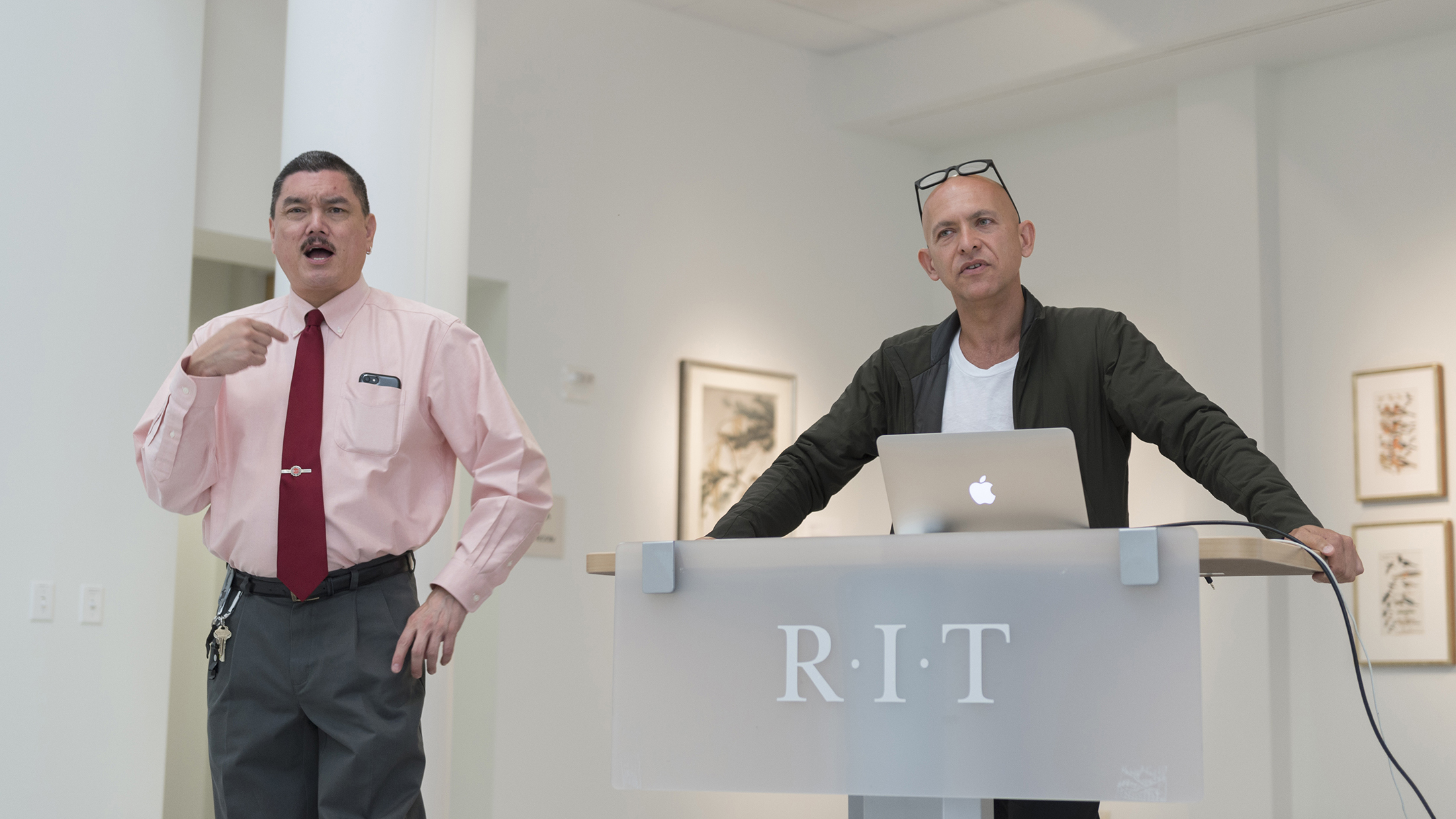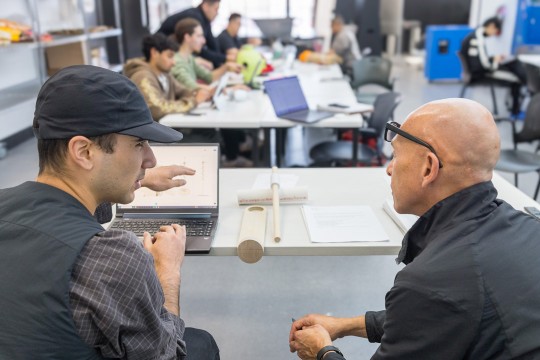Students to design, implement restaurant takeover for this year's Metaproject
RIT undergraduate industrial design seniors will be “Designing Dining” this semester for the eighth iteration of Metaproject, the program’s annual initiative for which students pair up with an industry partner to produce elegant design that addresses certain challenges.
Local restaurateur Chuck Cerankosky was named as this year’s client at a kickoff event on Aug. 31 in University Gallery. Adding to an already intriguing idea is the fact that this is the first time a Metaproject sponsor is also a Rochester Institute of Technology graduate, with Cerankosky being a 2003 industrial design alumnus.
Cerankosky co-owns two restaurants that are Rochester hotspots, Good Luck and Cure, and is the food and beverage coordinator for Radio Social, which has become immensely popular since opening earlier this year. He’s been on the design teams of many restaurants over the years, too.
This year’s Metaproject is a multidisciplinary approach that will lead to a pop-up dining experience that channels the forward-thinking design ethos and concepts embodied by the eateries Cerankosky owns or operates. The fall-semester course will culminate in a takeover of Good Luck restaurant in December.
Students are tasked with designing and controlling all elements of the space’s front-of-house — or customer portion — experience, informing every decision from a design perspective.
While the previous Metaprojects focused on students collaborating with real-world clients to create their own prototypical designs, this semester, the seniors will work together, drawing from their unique backgrounds and talents and blending it all together.
“This is different than what we’ve done before in the Metaproject in the sense that our job — and I mean all of us — is to develop a holistic experience, and that’s not something one person can do in this kind of a context,” Metaproject creator and industrial design professor and program chair Josh Owen said during the introductory event. “We’re going to be operating as a collective, which is going to be really challenging and exciting, and in the end, the sum will be far greater than its parts.”
Serious thought about the overall look and feel, furniture, seating and table layout, accessories, décor, tabletop, menu design and display, interior architecture, ordering and payment systems, dishware, glassware, light fixtures, branding, marketing campaigns, staff uniforms, and much more factor into a complete, clever restaurant design.
Students are being asked to reimagine the dining experience and treat the project area as a blank canvas.
“Chuck’s restaurants are going to become sort of a living laboratory for your exploration,” Owen said to the students during the kickoff.
“I’m honored to be chosen to be part of it and flattered that my profession is seen as a good format to explore design in,” Cerankosky said, “as I’ve definitely used my design education professionally, but in a very nontraditional way.”
Cerankosky is responsible for the well-planned, sleek designs of many components of numerous restaurants. He’s employed his design skill, from branding to web to graphic to interior work, for many clients, including recently opened fried-food specialist Boxcar, on Railroad Street in Rochester.
Not only will the ID students work with one another, they’ll also collaborate with individuals from other School of Design programs.
Senior RIT interior design student Marla Murrett and the program’s chair, Mary Golden, will act as interior design consultants, contributing their input and expertise. The plan is to involve RIT’s graphic design and new media programs as well.
Golden said Murrett is a creative and talented designer who will meet with the students to review their concepts and offer suggestions on designing for the hospitality setting. Murrett is set to take an independent study with Owen as the two will work closely to meet some of the project’s goals. Golden will provide ongoing support for Murrett and Owen, in addition to student reviews.
“This is interior design’s first collaboration in Metaproject and we are very honored to be invited to participate,” Golden said. “Our interior design program specializes in creating memorable, experiential environments that are purposeful and poetic.
“The pop-up restaurant is the ideal problem for our programs to work on together because our focus on objects and interior space is so intertwined,” Golden added. “In this inaugural partnership, both Josh and I are excited for our students to see the problem through multiple lenses, and we believe this to be the start of many collaborations.”
Cerankosky believes all design particles coalescing into one cohesive form — such as menu typeface relating to objects used in a physical space — can help dictate restaurants’ success. Metaproject 08’s inclusion of several disciplines is a full embrace of that system.
“I’m always trying to challenge the format and challenge the students to work in contemporary modalities,” Owen said. “So the idea of co-creation in defining the outcome as a group is something I’ve always wanted to find a fit for with Metaproject. I think this is the perfect opportunity. Creating an experience that people share is a fundamental desire that we all have.”



